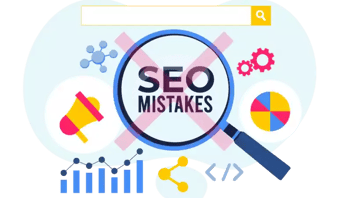Maximize Your Website Conversions: How to Perform a Content Audit
If you were to ask any number of companies about their content strategy, most of them would tell you about new content creation. Maybe they'd mention monitoring the performance of their content for insights about what their editorial calendar for future months should include. The best online marketers know better. They understand the importance of looking at past content to adjust pieces to improve results in the future.
Content audits are critical elements when implementing successful Content Marketing. They are a powerful way to improve website traffic quickly. If you have a website that's 3-5 years old, have regular content production, and have never performed a content audit, you should expect your organic traffic to increase 50-100% or more when going through your first audit and improvement program.
From a technical perspective, if you have many outdated and nonperforming pages, the crawl efficiency of Google's bots is seriously impeded. When it takes crawling, say, 1,000 URLs to find 100 good ones, they will take note and not spend as much time crawling through your content in the future.
From a marketing perspective, your content represents your brand. Maintaining, updating, and improving your content to your audience shapes how visitors and customers see you as an authority in your industry. A clear topical focus, ease of discovery, and ensuring value for users all arise from optimizing and curating your existing content.
Regular content maintenance is not only worthwhile, it is an essential endeavour to ensure your content is and keeps working for you.
When performing content audits, we organize content elements into three categories:
-
Good: the most traffic-generating, highest converting, linked, and shared content.
-
Improve: content that generates below-average results but covers a relevant subtopic.
-
Remove: content that produces no ROI and covers a topic/subtopic no longer relevant to the business.
Let's talk about how a content audit will address these categories.
Steps for completing a basic content audit:
1. Decide what you want from your content
Delineate the main metrics you want to hit with your content. Common goals are site traffic, backlinks, social shares, conversions, sales, and business growth. Every one of your site's pages should contribute to at least one of these, and any page that does not further at least one of these goals falls into the Remove pile.
Mandatory pages like About Us or Contact Us are exceptions to this general categorization. You may be able to improve these pages (meta descriptions, URL slugs, etc.), but they stand outside this overall content analysis/audit.
2. Collect all your content
Start by finding all of your website pages. You may be able to pull these from the backend of your site or your sitemap. Depending on the content management system you use, this can be as simple as exporting your pages into a spreadsheet. URLs can also be gleaned from Google Analytics data, Google Search Console, or a comprehensive crawl with the tool of your choice. Put this information on a spreadsheet with columns for URL, page title, page type (like blog or landing), and metrics (like monthly traffic, backlinks, shares, and conversions).
3. Categorize your content: Good, Needs Improvement, and Remove
Note where your traffic, backlinks, and conversions over the past year have come from. Use a tool like BuzzSumo to find which pages gained traction on social media and where the backlinks are to your content. Google Analytics of Google Search Console can show you traffic to individual URLs.
Pages with above-average (or defined threshold) results for your metrics go in the "Good" pile. Any pages with below-average results for any of your metrics go in the "Improve" pile. Pages with zeroes across your metrics are in the "Remove" pile.
Here are some questions to ask as you assess what to keep, what to improve, and what to remove.
-
Is it worth people's time? Is it helpful, informative, or entertaining? Does it answer questions, help solve problems, or keep the reader interested?
-
Is it worthwhile to our company? Is it earning organic rankings, traffic, or backlinks? Is it providing business value by helping to drive conversions? Does it help establish branding or effectively build authority? Does it cover a critical subtopic in your topic cluster?
-
Is it relevant to our work? There is no reason, with rare exception, to keep content that is not, at the very minimum, distantly related to your site, industry, and customers.
-
Have we said this before? Repeated content doesn't help anyone, and it clogs up your site. If you have content that has been better addressed elsewhere, then it needs to be merged with the better-performing content asset or pruned.
4. Optimize and revise your content
Now that you have the categorized content, it's time to improve or remove it. These improvements can come from targeting, writing, and grammar. Be sure your content has a clear point, targets a specific topic, and uses terms correctly. Then, add any technical improvements you find it needs, such as relevant internal links, meta descriptions, or alt text. Creating and having quality content is key!
Evaluate posts that don't need any obvious fixing and get more value through repurposing and updating them to create evergreen content.
After assuring yourself the Good pages either don't need updating or have been updated, move on to the Improve pages. You'll probably have to spend most of your time here. These pages have shown promise, so pay close attention, and you'll find ways to make them perform better.
Elevating your content audit to maximize website conversions involves a holistic approach. Dive deeper into key elements like videos, broken links, internal link building, on-page SEO, CTAs, and forms:
-
Videos: Evaluate the presence and performance of videos on your site, considering metrics like view counts, watch time, and user engagement. Ensure videos align with your brand and offer value to your audience, enhancing the overall user experience. Optimize video quality for a seamless and enjoyable viewing experience, contributing to positive user perceptions. Consider strategic placement of videos within relevant content to maximize visibility and impact.
-
Broken links: Promptly identify and rectify broken links using tools like Google Search Console or online link checkers. Understand the potential impact of broken links on user experience and SEO, emphasizing the importance of maintenance. Either fix broken links or redirect them to relevant content to maintain a seamless browsing experience. Schedule periodic checks to ensure ongoing link integrity and a smooth user journey.
-
Internal link building: Integrate internal links contextually within content to guide users through relevant information. Establish a hierarchy of information through well-structured internal linking, aiding in content discoverability. Use descriptive anchor text to enhance user understanding and encourage click-throughs. Ensure a diverse array of internal links for comprehensive coverage across your site. Facilitate easy navigation for users seeking additional information by strategically placing internal links.
-
On-page SEO: Ensure pages are optimized for relevant keywords, improving search engine visibility. Optimize meta titles and descriptions to enhance click-through rates and provide concise content summaries. Utilize header tags to structure content for both users and search engines, aiding in content hierarchy. Ensure responsiveness and a seamless experience across devices, accommodating diverse user preferences. Optimize page speed for better user experience and enhanced search engine ranking.
-
Call-to-Actions (CTAs): Position CTAs strategically to capture user attention and guide them toward desired actions. Clearly articulate the value proposition in CTAs, ensuring users understand the benefits of taking the suggested action. Utilize a variety of CTAs, including buttons, forms, and links, catering to diverse user preferences. Align CTAs with conversion goals, whether it's a purchase, sign-up, or download, to drive targeted actions. A/B test different CTAs to identify the most effective ones, refining your approach based on user response.
-
Forms: Streamline forms for a user-friendly experience, reducing friction and encouraging completion. Ensure form fields are relevant to the information you need, collecting valuable data efficiently. Implement progress indicators for longer forms to keep users informed and engaged throughout the process. Provide clear error messages and validation to prevent user frustration and ensure accurate data submission. Integrate forms with your CRM or email marketing tool for efficient lead management, facilitating seamless follow-up processes.
An example would be a page built for traffic that is below average. You could add outbound links and an additional section that includes several keywords. Try linking to it from a better-performing page and making changes to one page so it performs better.
Delete everything in the Remove pile, and redirect the URLs to the blog home page or a relevant landing page.
5. Do a content audit annually, at least
As you continue to weed out low-performing content, the content auditing process will become easier and easier. With a database of your existing content to work from, it's crucial to monitor the impact of your updates and revisions. Set aside time every 6-12 months to reassess your content and allocate a budget for creating fresh content and maintaining existing pieces. Remember, search engines favor well-organized and valuable websites. Don't be discouraged if you don't see immediate results from your content audit. It takes time for Google to recognize and reward your hard work.
This content is also available in:
- German: Website-Konversionen maximieren: Wie man ein Content Audit durchführt
- Spanish: Maximice las conversiones de su sitio web: auditoría de contenido
- French: Maximisez les conversions : Comment réaliser un audit de contenu
- Italian: Massimizza le conversioni del sito: Fai un audit dei contenuti
- Romanian: Maximizare conversii: Audit de conținut pentru site-ul tău
- Chinese: 最大限度地提高网站转化率:如何进行内容审计











Leave a Comment